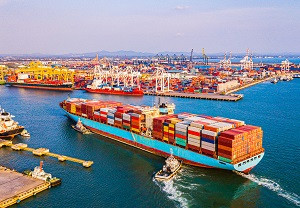
Microlearning Course: Customs
Duration: 5 hours
Price: R445.50
Microlearning Course: Customs
Overview
The customs series offers a comprehensive look into key areas of international trade compliance. From tariff classification to customs valuation, rules of origin, import/export controls, and clearance processes, the series equips professionals with practical insights for optimising cross-border transactions.
Purchase the entire video series to receive a 10% discount. If you prefer to buy individual parts, click here to purchase them separately.
All of the content is based on tax law for the year ending 28 February 2025.
Video Content
-
Tariff Classification: Understanding Product Codes and Trade Treaty Benefits
-
Customs Valuations: Determining Customs Value Under WTO Regulations
-
Rules of Origin: Ensuring Compliance for Favorable Trade Terms
-
Imports/Exports Controls: Navigating Regulatory Frameworks
-
Customs Declarations and Clearing
Competencies Development
-
Mastery of tariff codes and classifications.
-
Expertise in customs valuation and pricing methods.
-
Navigating trade agreements and rules of origin.
-
Managing import/export regulatory compliance.
-
Effective customs clearance strategies for risk mitigation.
What's Included:
Customs: Exploring the Benefits and Navigating Criteria of Rules of Origin
Overview Have you ever come across the concept of "preference" in international trade? It's like rolling out the red carpet for certain products based on their place of origin. When your products comply with the origin rules outlined in a Trade Agreement, it opens the door to reduced tariffs, more relaxed import quotas, and advantageous trade terms. To put it simply, adhering to the origin criteria in an agreement grants your product a "preference." This means you'll be paying lower tariffs compared to goods that don't meet these qualifications. Embarking on a journey to explore the significance of Rules of Origin and learning how to effectively navigate their criteria can be an informative experience. In this video, we will delve into the benefits that Rules of Origin offer and provide practical guidance on successfully navigating their criteria. Join our video, as we dive into the details, guiding you on how to leverage these benefits to your advantage. Video Content Unpacking the Agreement on Implementation of Article VII of the General Agreement on Tariffs and Trade (GATT) 1994, also known as the WTO Customs Valuation Agreement. Why is a customs value necessary? Is the customs value used for any other purpose other than import duty? How to source the correct legislation covering the customs valuation? How is customs value calculated as well as the various methods of customs valuation, in descending order of precedence? Commentary analysis on the Customs value of imported goods. Competencies developed in this video Gain an eloquent understanding of the various international agreements in place that govern the calculation and valuation of customs. Understand the purpose of customs valuation and where else these values can be applied. Obtain insights into the latest accurate customs legislation. Acquire the ability to practically implement the six stages of customs valuation in their descending order of precedence. Comprehend the Customs Valuation Database and how SARS makes use of it to reduce the likelihood of incorrect valuations or fraud.
1 Hour | R99.00
Sipho MhagaCustoms - Imports and Exports Controls
Overview Do you provide services to exporters and/or importers embarking on an import and export drive for the first time? Much like restricted party lists are utilised to mitigate risks in your organisation by controlling interactions with spe cific individuals or companies, export and import controls serve the purpose of regulating the movement of products and technologies worldwide. Export controls are country-specific and are typically implemented with considerations for national security and foreign policy. For instance, items like implements of torture or dual-use goods such as munitions are generally restricted for export to any country. Meanwhile, certain exports, for example encryption items, may only be controlled for specific entities such as terrorist regimes and globally embargoed nations. An effective import and export control program is a crucial aspect of trade compliance, and it can be fairly straightforward for a company to implement. The first step is to establish one. Commodities intended for cross-border transactions must undergo a thorough review, with any import and export control requirements duly noted and implemented. This video enables companies and individuals involved in importing goods to adhere to statutory and regulatory guidance provided by agencies, thereby reducing the cost of compliance and facilitating international trade. Taking advantage of available rebates is also recommended. Video Content: What are export and import controls? Regulations, licenses, and agencies. Essentials of an effective export control system. Knowing the laws and your obligations. Additional notes to consider on clearance. Competencies developed in this video Understand that not all products can be imported/exported freely. Understand the influence of government agency policies on trade dynamics and local industries. Able to navigate the applicable legislation. Uncover the processes to follow and comply with legislation. Understand the procedure for efficient customs clearance. Assist your company in identifying areas of possible non-compliance requiring a health check/review.
1 Hour | R99.00
Sipho MhagaCustoms Declarations and Clearing
Overview The customs declaration and clearance process are a pivotal part of customs compliance, making it critical for importers and exporters to ensure a high level of attention to their cross-border operations. This topic integrates other custo ms subjects covered in previous webinars, such as product classification, Rules of Origin, customs valuation, and import and export controls, into a key phase of customs compliance. Importers and exporters engage various stakeholders, including service providers, throughout the value chain to deliver products to their final destination. It is essential to identify the factors and steps for efficient and compliant declaration and clearance processes. Understanding the sequential actions requiring attention throughout the value chain is necessary. Tax professionals working with customs should be able to draft cross-border manuals, simple flowcharts, and service level agreements (SLAs) with involved stakeholders. Additionally, creating document/information checklists for employee reference and knowing when to obtain a customs health-check is crucial for high-level compliance and smooth, seamless clearances. Video Content Purpose of Customs Clearance The Customs Clearing Process Registration Requirements Customs Declaration forms/docs Submissions Clearing Instructions Other Tax Jurisdictions (for reference and comparison) Competencies Developed Link customs clearance declarations seamlessly to other customs cornerstones such as Product Classification, Rules of Origin, Customs Valuation, and Import & Export Controls for effective cross-border operations and compliance. Identify key factors within the business that assist in efficient and compliant declaration and clearing processes. Gain an understanding of other actions requiring attention throughout the value chain. Draft cross-border manuals and simple flowcharts and prepare service level agreements (SLAs) with stakeholders. Create document/information checklists for employees to refer to in performing their daily duties.
1 Hour | R99.00
Sipho MhagaCustoms Valuations
The world of Customs and Excise is an exciting but somewhat intimidating landscape, particularly for those who are entering into this new trepidatious realm. Jump on board as SNG Grant Thornton’s Customs and Excise Senior Manager, Sipho Mhaga, takes us on a journey to easily and practically understand why customs value is essential to the calculation of the total duty to be paid on imported goods. Learn more about important terminology and principles like Transaction Value, Customs Value Hierarchy, and Customs Valuation Database, enabling you to offer your clients comprehensive advice and insight. Video Content Unpacking the Agreement on Implementation of Article VII of the General Agreement on Tariffs and Trade (GATT) 1994, also known as the WTO Customs Valuation Agreement. Why is a customs value necessary? Is the customs value used for any other purpose other than import duty? How to source the correct legislation covering the customs valuation? How is customs value calculated as well as the various methods of customs valuation, in descending order of precedence? Commentary analysis on the Customs value of imported goods. Competencies developed in this video Gain an eloquent understanding of the various international agreements in place that govern the calculation and valuation of customs. Understand the purpose of customs valuation and where else these values can be applied. Obtain insights into the latest accurate customs legislation. Acquire the ability to practically implement the six stages of customs valuation in their descending order of precedence. Comprehend the Customs Valuation Database and how SARS makes use of it to reduce the likelihood of incorrect valuations or fraud.
1 Hour | R99.00
Sipho MhagaCustoms Tariff Classification
Series Overview In a world characterized by interconnected economies, international trade serves as the lifeblood of global commerce. The movement of goods across borders, the exchange of services, and the intricate networks that span continents a ll contribute to the dynamic landscape of trade. At the heart of this intricate dance lies the realm of customs – a pivotal gateway that ensures the smooth flow of goods while safeguarding each nation's economic interests. Embark with us on a journey into the world of trades and customs, where our first session will delve into the nuances of Tariff Classifications, whilst in later sessions we will explore customs valuations, rules of origin, import & export control and customs clearances. Overview In the ever-evolving landscape of international trade, understanding the nuances of tariff determination, government interventions, and classification of goods is crucial for your business's success. Although tariffs have historically been used by governments to collect taxes in the ever-evolving landscape of international trade, they have increasingly been used to protect local industries against cheap imports. This video will demystify tariff determination, government interventions' impact, and the crucial processes for classifying goods. Video content Mastering Tariff determination The impact government interventions have on trade and the protection of local manufacturing industries. Procedures for Goods Classifications to be followed when classifying goods. Competencies developed in this video Decipher tariff codes and optimize your cost management strategies. Understand the influence of government policies on trade dynamics and local industries. Uncover the latest trade treaties and their implications. Understand the procedure for goods classifications for efficient customs clearance.
1 Hour | R99.00
Sipho MhagaRelated Webinars

Microlearning Course: Considering a 360 on revenue: How to properly account for revenue


